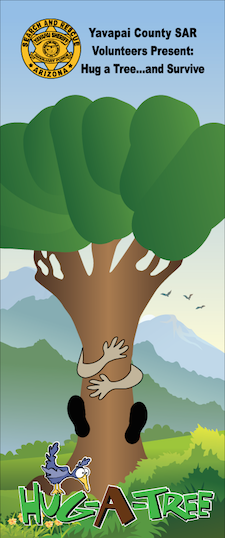Backcountry Mistakes
Here are some of the common mistakes that people make when traveling in the backcountry. With proper planning, preparation, and prevention, these mistakes and their consequences can be avoided. Regardless of experience level, no one is immune from getting lost, stranded, injured, or killed while recreating or working in a wilderness environment.
Common Backcountry Mistakes and Solutions
1. Keep the where and when of your hike secret!
Always give someone you trust a written copy of your trip plan. This plan should include:Your estimated time of departure
- The names, addresses, and phone numbers of all group members
- Any relevant medical conditions
- Your vehicle's make, model, and license number
- Your expected route of travel, trail head information, and camp sites.
- Your final destination and expected time of return.
Agree on a procedure for contacting the authorities if you do not report-in by a certain time. Leave a copy of your itinerary in your vehicle. If you change your plans, call your contact before you start and give them the update. In Search and Rescue we find people by following clues. This is the first and most important clue that we need.
2. Hike alone!
Always go with a group. There is safety in numbers.
3. Hiking with a group - separate!
Always start as a group, hike as a group, end as a group.
The group should stay within conversation distance of each other. This will help everyone stay close together.
If you are faster than others in your group, be a friend and slow down for the safety of everyone. The slowest person should lead and set the pace. Be patient! You will get there.
4. Not turning back!
There are many things that will cause you and the group to turn back. Not making this decision to turn back can jeopardize your life or the life of others in your group. Avoid Summit Fever!
Some reasons for turning back are:
- Weather changes
- Pain, injury, or illness
- Environmental medical conditions - heat injury, cold injury, effects of altitude, dehydration
- Fatigue
- Physically unfit
- Hazards - avalanche danger, swift water, adverse terrain
- Insufficient experience, skill level, and proficiency
- Improperly prepared
- Underestimated the time required to complete the trip
If anyone in the group needs to turn back, then everyone turns back. Know your limitations and when to postpone your hike. The mountains will be there another day.
5. Not dressing properly!
Be prepared for the worst kind of weather possible for the time of year in the geographical location that you are going to be in or travel through.
Do not wear cotton clothing. Wear wool, fabric blends, or synthetics that are resistant to moisture and that dry quickly. Layer your clothing in order to control your body temperature.
Use the do not sweat rule when doing strenuous activity such as hiking, snowshoeing, or cross country skiing.
6.Ignore what your body is telling you!
Pay attention to what your body is telling you.
For example, if you are experiencing nausea, headache, dizziness, fatigue, or shortness of breath then you may be succumbing to one of the environmental medical conditions such as
- Dehydration
- Cold Injuries
- Hypothermia - life threat
- Frostbite
- Heat Injuries
- Sunburn
- Heat Syncope - fainting
- Heat Cramps
- Heat Exhaustion
- Heat Stroke - life threat
- Altitude Illness
- Acute Mountain Sickness (AMS)
- High Altitude Pulmonary Edema (HAPE)
- High Altitude Cerebral Edema (HACE)
- Sunblindness
These environmental medical conditions are self-inflicted. They can be avoided with proper awareness and prevention. First Aid training builds this awareness. Take a wilderness based First Aid course.
7. No Survival Kit!
Be prepared for the worst. Always take a survival kit.
Some of the items a survival kit should contain are:
- Shelter package - 10 ft x 10 ft tarp and 50 feet of parachute cord
- Proper clothing
- Fire starting kit
- Water and water purification methods
- Signaling devices - whistle, signal mirror, flashlight
- Food
- First aid kit
- Navigation - map, compass
8. Not accounting for your dog's safety and well being!
Your dog is only as fit as you are. It also needs food, water, and physical conditioning just like you do.
“Content Courtesy Of Larimer County Search and Rescue”






































